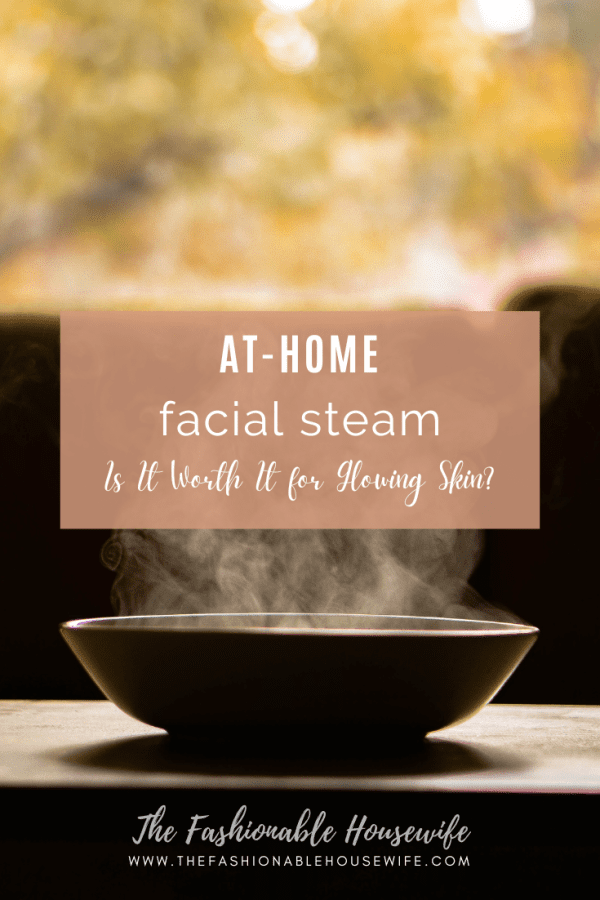
Facial steaming at home is one of the most affordable ways to achieve cleaner pores, improved blood flow, and a healthy glow—but is it really effective? In this guide, we break down how facial steam works, who it’s good for, how to do it right, and whether it’s worth adding to your skincare routine.
Let’s explore what this classic DIY ritual can actually do for your skin.
What Does Facial Steaming Actually Do?
Facial steaming works by exposing your skin to warm, humid air for a short period. This heat causes your skin to sweat lightly and your pores to open, loosening up:
- Dead skin cells
- Oil and sebum buildup
- Dirt and product residue
- Blockages that may cause blackheads or breakouts
At the same time, the warmth from steam helps increase circulation, bringing fresh blood—and oxygen—to the surface of the skin, which can instantly improve its appearance.
Who Should (and Shouldn’t) Use Steam?
Great for:
- Oily skin: Helps clear out excess sebum
- Dull skin: Boosts blood flow and glow
- Clogged pores / blackheads: Loosens debris and makes extraction easier
- Anyone preparing for masks or active treatments
Not ideal for:
- Sensitive or rosacea-prone skin: Heat can trigger flare-ups
- Severe acne: Steam may worsen inflammation
- People on strong topicals (like retinoids): Steam can make skin more reactive
Always test how your skin reacts the first time, and limit steam sessions to once or twice a week max.
How to Do an At-Home Steam the Right Way
Step-by-step guide (no expensive tools required):
- Cleanse your skin with a gentle face wash
- Boil water and pour it into a large bowl
- Let it cool for 1–2 minutes to avoid burning
- Place your face ~8–12 inches above the bowl, and cover your head with a towel
- Steam for 5–10 minutes (not more), taking breaks if it feels too hot
- Pat your face dry, don’t rub
- Follow with toner, serum, or a face mask—your skin is now prepped to absorb ingredients better
To hydrate and calm your skin post-steam, try the One Thing Hyaluronic Acid Complex Toner. It replenishes moisture and helps lock it in before applying further treatments.
🌿 Can You Boost Steam Benefits with Ingredients?
Yes—adding natural ingredients to your steam water enhances the experience:
Ingredient
Benefit
Green tea leaves
Antioxidant & anti-inflammatory
Chamomile
Soothing & redness-reducing
Rose petals
Gentle hydration + relaxation aroma
Lavender oil
Calming scent + antibacterial
Lemon peel
Brightening (for oily skin types)
Note: Don’t use essential oils directly in water—just 1 drop max diluted in carrier oil or infused via herbs.
What Happens to Your Skin After Steaming?
Short-term effects:
- Skin looks dewier and feels softer
- Serums and moisturizers absorb better
- Pores appear more open and less congested
Long-term (when done weekly):
- Fewer breakouts and blackheads
- Better product performance
- More even tone and brightness
- Healthier barrier function (if followed with hydration)
Common Mistakes to Avoid
- Steaming too close to the water (risk of burns)
- Using hot—not warm—steam
- Doing it more than 2× per week
- Skipping hydration or SPF afterwards
- Steaming when skin is sunburned or compromised
Final Verdict: Is It Worth It?
Yes—if done correctly, facial steaming can be a valuable step in your skincare routine. It enhances product penetration, encourages glow, and gives you that spa-like experience to pamper yourself at home without the price tag.
But it’s not magic on its own.
Pair it with:
- Proper cleansing
- A calming toner
- Hydration post-steam
- And SPF the next morning



